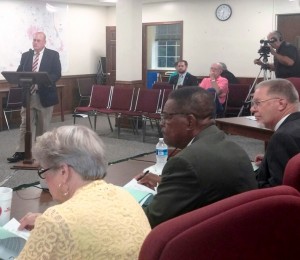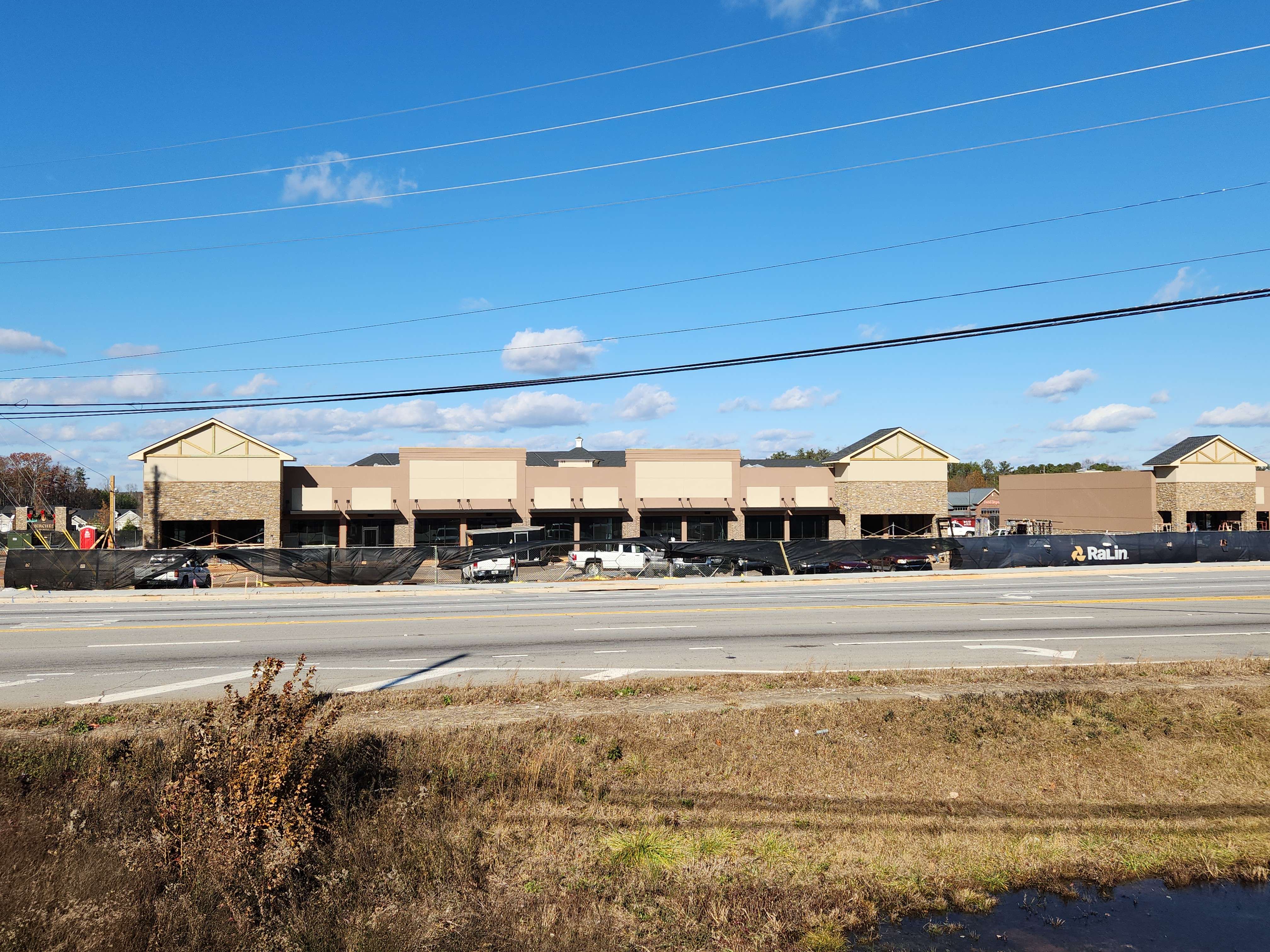The Coweta County Board of Education voted to tentatively approve an operational budget of $179,110,178 for the 2016 fiscal year (FY 2016), at the board’s regular monthly meeting on Tuesday, June 9.
The Coweta County School System’s FY 2016 budget tentatively approved by the Board Tuesday is balanced, and does not project an increase in local property taxes. The Board of Education has maintained an 18.59 mill property tax rate since first setting it in the summer of 2004.
Charts detailing revenues and expenditures in the school system’s FY 2016 budget accompany this article. Final approval of the budget will require a second vote, which is planned for a called meeting of the school board on June 24 at 8:00 a.m., at the 237 Jackson Street Board of Education Office.
The school system operates on a fiscal year that extends from July 1 until June 30 of the following year. The budget covers school system operations and other expenditures during the upcoming fiscal year. It is also based on revenue estimates including anticipated state educational funding during the upcoming year and local property tax revenue.
The FY2016 budget would also achieve several goals of the school board, including:
· Maintaining the current student calendar of 180 instructional days, and the current instructional program for students.
· School system funding of increases in health insurance costs for classified employees set to take effect in FY 2016.
· Step increases for certified and classified employees, where due.
· A 2 percent raise for certified and classified school system employees.
The FY2016 operational budget – excluding workers compensation and unemployment – is balanced, with no use of system reserves projected. For several years, the school system has projected use of system reserve funds for the annual budget, though use of budgeted reserves was less than projected or avoided entirely.
For the current school year (ending June 30, 2015), $4.2 million in system reserves were budgeted. School System Assistant Superintendent for Finance Keith Chapman reported to the Board on Tuesday that the system is currently on track to avoid any use of reserves in FY2015 due to operational cost controls and increases in state and local funding during the year.
Chapman also reported an improvement in state revenues for the upcoming fiscal year, and said that continued improvement in the local tax digest is expected.
A 2 percent increase in growth for the local tax digest has been budgeted for FY 2016. Local tax digest grew in fiscal years 2015 and 2014, following significant declines in local revenue in several years before that. Earned educational revenues from the state are expected to increase by $6.1 million, in part because of state restoration of funding to school systems to assist with restoring work days and addressing employee pay.
2009 was the last year that the school system employees were offered a raise beyond step raises. Fiscal Year 2015 (the current year) was the first year in five years that employees whose salaries are not based on the state teacher pay schedule received a step increase, and the first year in several years that three calendar reduction days were eliminated for employees. Those measures had been in place for several years in response to state austerity cuts and other losses of revenue for the school system.
The school system still faces challenges in the FY 2016 budget, including:
• An increase in insurance costs for classified employees of $150 per employee per month (an approximately $1 million increase in system costs for FY2016).
• An increase in employer costs to the Teachers Retirement System (an approximately $1.2 million increase in system costs for FY2016).
• $5.9 million in remaining state austerity funding reductions for FY2016.
The FY 2016 General Fund budget of $179 million tentatively approved Tuesday is funded principally by state revenues and local property taxes. The General Fund includes the largest portion of funding for instruction and pupil services, maintenance and operation of schools, transportation, and other operational costs.
In addition to the General Fund, there were three other components tentatively approved by the board as a part of its total FY 2016 budget.
These include $22,086,463 in expenditures from Special Revenue Funds, which accounts for special federal programs such as Title I, federal lunch programs, and IDEA.
Also included is $28,450,358 in expenditures from Capital Projects Funds, which accounts for construction and other capital expenditures during the year. School construction is funded principally by Educational Special Purpose Local Option Sales Tax (ESPLOST) revenues. The system also receives some state funding for construction.
Those funds, combined with operations funds, total $229,646,999.
Since the school system retired all outstanding bonds in 2013, no Debt Service expenditures are budgeted in FY 2016.
If adopted in a final vote on June 24, the budget will take effect on July 1.






